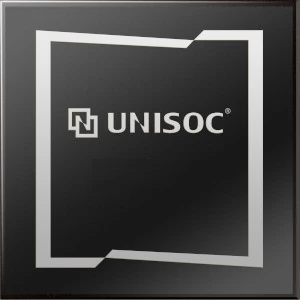Unisoc SC7731E vs Unisoc Tanggula T740 5G
When comparing the specifications of the Unisoc SC7731E and the Unisoc Tanggula T740 5G processors, it becomes evident that the latter offers significant advancements.
Starting with the CPU cores and architecture, the SC7731E is equipped with a quad-core Cortex-A7 processor running at 1.3 GHz. In contrast, the Tanggula T740 5G boasts a more powerful configuration of eight cores. It consists of a quad-core Cortex-A75 running at 1.8 GHz and another quad-core Cortex-A55 also operating at 1.8 GHz. This configuration affords the Tanggula T740 5G enhanced performance potential, especially in multitasking scenarios.
Moving on to the instruction set, while the SC7731E employs the ARMv7-A architecture, the Tanggula T740 5G utilizes the more advanced ARMv8.2-A architecture. This ensures improved efficiency and compatibility with the latest software and applications.
In terms of lithography, the SC7731E is manufactured using a 28 nm process, whereas the Tanggula T740 5G leverages a more modern 12 nm process. The reduction in lithography size results in a more power-efficient and cooler-running processor, ultimately enhancing overall device performance.
Furthermore, the Tanggula T740 5G boasts an additional feature not found in the SC7731E – Dual Neural Processing Units (NPU). These NPUs enable the processor to handle complex artificial intelligence tasks, enhancing the device's capabilities in areas such as facial recognition, image processing, and machine learning.
In summary, the Unisoc Tanggula T740 5G outperforms the SC7731E in several key areas. It excels with its more powerful and flexible CPU configuration and has a more advanced instruction set, which improves compatibility and efficiency. Additionally, the T740 5G's 12 nm lithography and dual NPUs provide superior power efficiency and AI processing capabilities. These specifications make the Tanggula T740 5G a compelling option for devices requiring enhanced performance and AI capabilities.
Starting with the CPU cores and architecture, the SC7731E is equipped with a quad-core Cortex-A7 processor running at 1.3 GHz. In contrast, the Tanggula T740 5G boasts a more powerful configuration of eight cores. It consists of a quad-core Cortex-A75 running at 1.8 GHz and another quad-core Cortex-A55 also operating at 1.8 GHz. This configuration affords the Tanggula T740 5G enhanced performance potential, especially in multitasking scenarios.
Moving on to the instruction set, while the SC7731E employs the ARMv7-A architecture, the Tanggula T740 5G utilizes the more advanced ARMv8.2-A architecture. This ensures improved efficiency and compatibility with the latest software and applications.
In terms of lithography, the SC7731E is manufactured using a 28 nm process, whereas the Tanggula T740 5G leverages a more modern 12 nm process. The reduction in lithography size results in a more power-efficient and cooler-running processor, ultimately enhancing overall device performance.
Furthermore, the Tanggula T740 5G boasts an additional feature not found in the SC7731E – Dual Neural Processing Units (NPU). These NPUs enable the processor to handle complex artificial intelligence tasks, enhancing the device's capabilities in areas such as facial recognition, image processing, and machine learning.
In summary, the Unisoc Tanggula T740 5G outperforms the SC7731E in several key areas. It excels with its more powerful and flexible CPU configuration and has a more advanced instruction set, which improves compatibility and efficiency. Additionally, the T740 5G's 12 nm lithography and dual NPUs provide superior power efficiency and AI processing capabilities. These specifications make the Tanggula T740 5G a compelling option for devices requiring enhanced performance and AI capabilities.
AnTuTu 10
Total Score
GeekBench 6 Single-Core
Score
GeekBench 6 Multi-Core
Score
CPU cores and architecture
| Architecture | 4x 1.3 GHz – Cortex-A7 | 4x 1.8 GHz – Cortex-A75 4x 1.8 GHz – Cortex-A55 |
| Number of cores | 4 | 8 |
| Instruction Set | ARMv7-A | ARMv8.2-A |
| Lithography | 28 nm | 12 nm |
| TDP | 7 Watt | |
| Neural Processing | Dual NPU |
Memory (RAM)
| Max amount | up to 1 GB | up to 8 GB |
| Memory type | LPDDR3 | LPDDR4X |
| Memory frequency | 533 MHz | 1866 MHz |
Storage
| Storage specification | eMMC 5.1 | UFS 2.1 |
Graphics
| GPU name | Mali-T820 MP1 | Imagination PowerVR GM9446 |
| GPU Architecture | Mali Midgard | PowerVR Rogue |
| GPU frequency | 600 MHz | 800 MHz |
| Execution units | 1 | |
| Shaders | 4 | |
| DirectX | 11 | |
| OpenCL API | 1.2 | 4.0 |
| OpenGL API | ES 3.2 | ES 3.2 |
| Vulkan API | 1.0 | 1.1 |
Camera, Video, Display
| Max screen resolution | 1440x720 | 2960x1440@60Hz |
| Max camera resolution | 1x 8MP | 1x 64MP |
| Max Video Capture | HD@30fps | 4K@30fps |
| Video codec support | H.264 (AVC) | H.264 (AVC) H.265 (HEVC) VP8 VP9 |
Wireless
| 4G network | Yes | Yes |
| 5G network | Yes | Yes |
| Peak Download Speed | 1.5 Gbps | |
| Peak Upload Speed | 0.75 Gbps | |
| Wi-Fi | 4 (802.11n) | 5 (802.11ac) |
| Bluetooth | 4.2 | 5.0 |
| Satellite navigation | BeiDou GPS GLONASS |
BeiDou GPS Galileo GLONASS |
Supplemental Information
| Launch Date | 2018 Quarter 2 | 2020 Quarter 1 |
| Partnumber | T740, Tiger T7510 | |
| Vertical Segment | Mobiles | Mobiles |
| Positioning | Low-end | Mid-end |
Popular comparisons:
1
MediaTek Dimensity 8400 vs Qualcomm Snapdragon 7 Gen 3
2
Samsung Exynos 9609 vs Qualcomm Snapdragon 732G
3
Samsung Exynos 1330 vs Qualcomm Snapdragon 636
4
Qualcomm Snapdragon 768G vs MediaTek Dimensity 9300
5
MediaTek Helio P60 vs Unisoc Tiger T710
6
Qualcomm Snapdragon 820 vs Apple M3 (iPad)
7
MediaTek Dimensity 1080 vs MediaTek Dimensity 8050
8
MediaTek Helio G99 vs Qualcomm Snapdragon 630
9
HiSilicon Kirin 9000E 5G vs Google Tensor G2
10
MediaTek Dimensity 720 vs Qualcomm Snapdragon 8 Elite (Gen 4)
